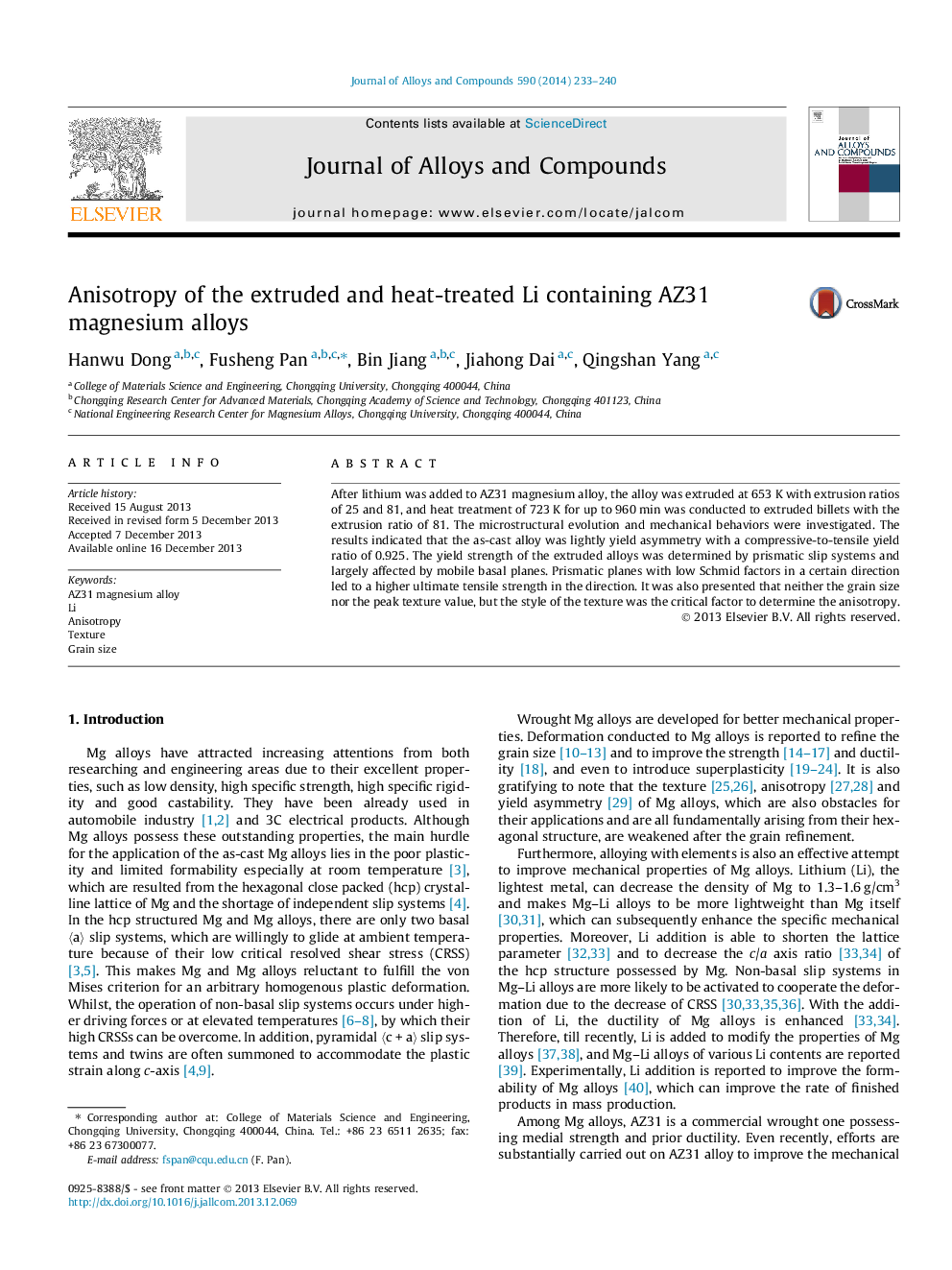| Article ID | Journal | Published Year | Pages | File Type |
|---|---|---|---|---|
| 1611616 | Journal of Alloys and Compounds | 2014 | 8 Pages |
•The as-cast and extruded AZ31-2Li alloys were reported.•The style of the texture was the key to determine the anisotropy here.•Anisotropy of YS and UTS of the extruded alloys was related to prismatic planes.
After lithium was added to AZ31 magnesium alloy, the alloy was extruded at 653 K with extrusion ratios of 25 and 81, and heat treatment of 723 K for up to 960 min was conducted to extruded billets with the extrusion ratio of 81. The microstructural evolution and mechanical behaviors were investigated. The results indicated that the as-cast alloy was lightly yield asymmetry with a compressive-to-tensile yield ratio of 0.925. The yield strength of the extruded alloys was determined by prismatic slip systems and largely affected by mobile basal planes. Prismatic planes with low Schmid factors in a certain direction led to a higher ultimate tensile strength in the direction. It was also presented that neither the grain size nor the peak texture value, but the style of the texture was the critical factor to determine the anisotropy.
